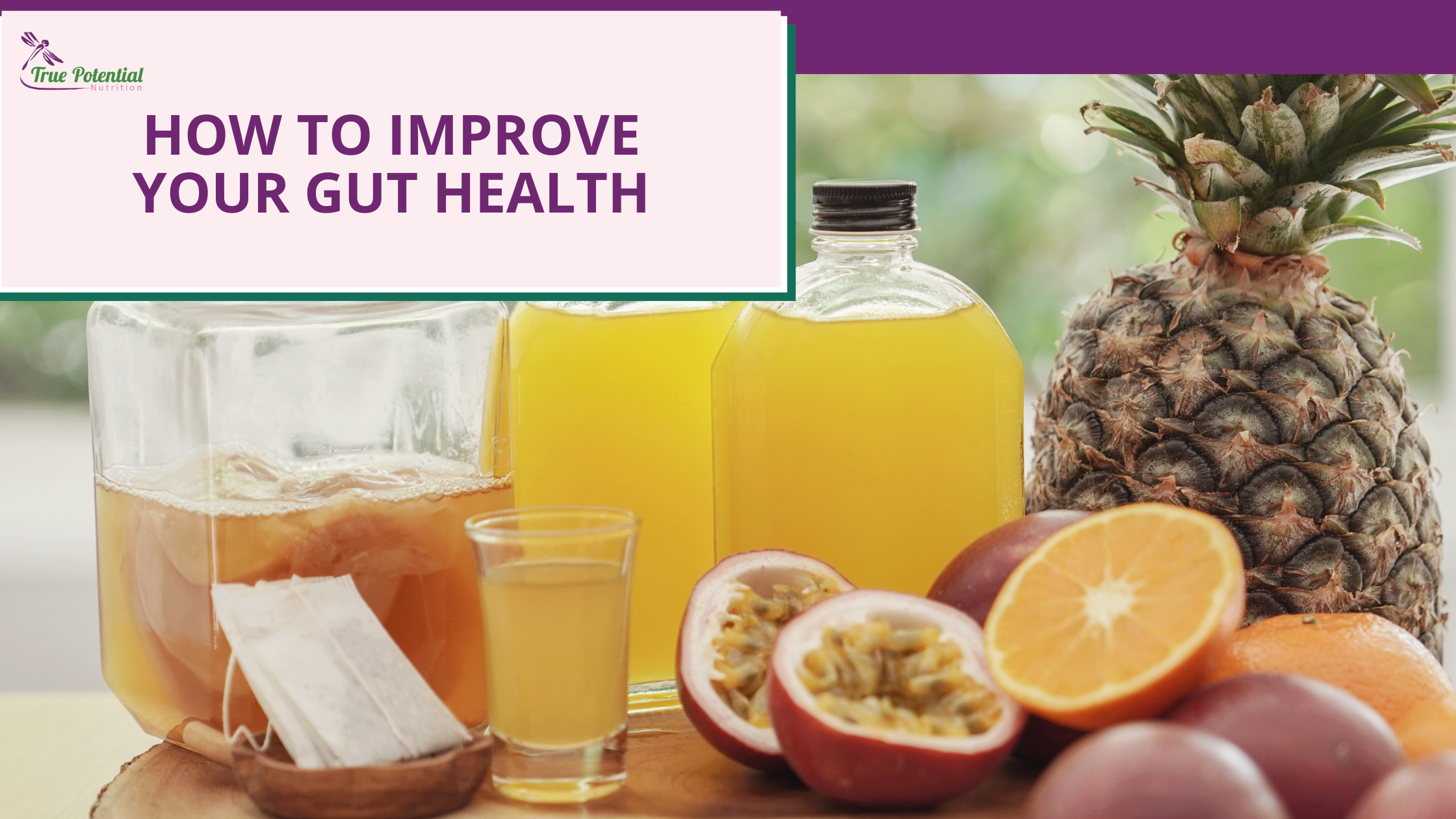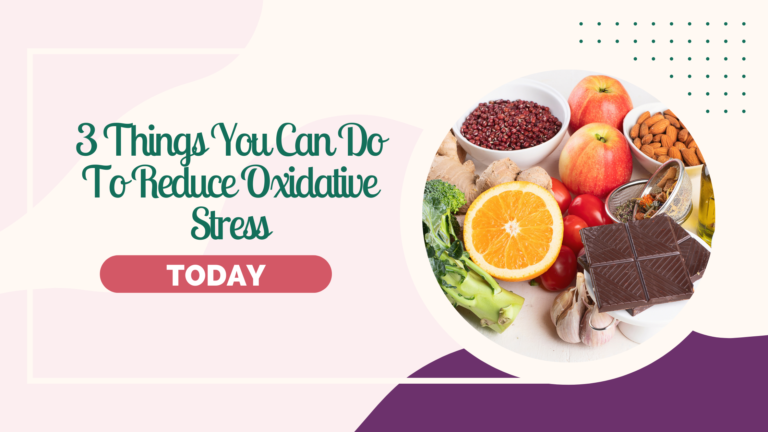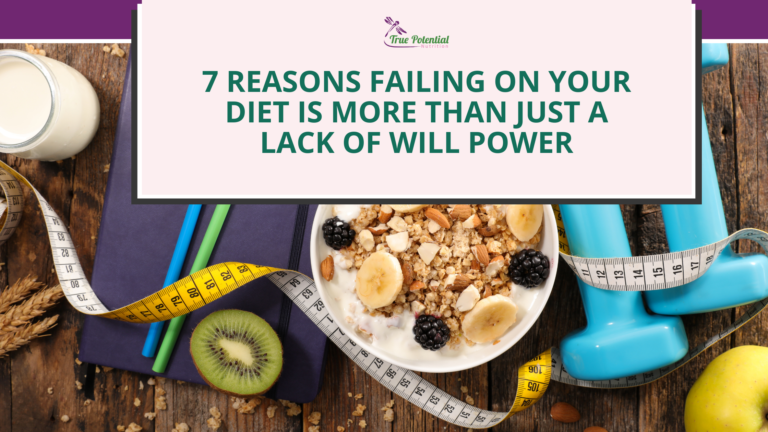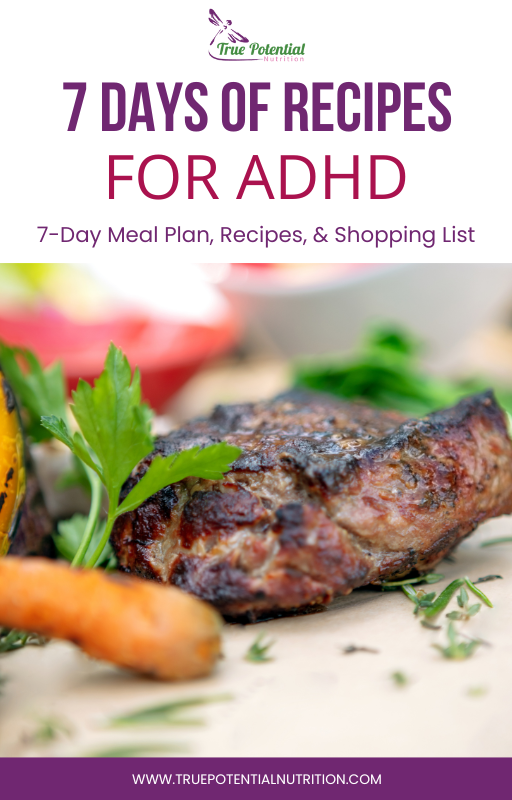By Danielle MacDowell

Main Takeaways
- Our gut microbiome is comprised of bacteria, viruses, fungi, and protozoa.
- In a balanced microbiome, there is an important interplay that happens between bacterial species and their host.
- Dysbiosis occurs when the quantity or the variety of bacteria are altered. In some cases this can result in “bad” bacteria outnumbering the “good” bacteria.
- Dysbiosis can result in gas, bloating, diarrhea, constipation, altered immune functioning, and intestinal permeability.
- Probiotics are live microorganisms that provide health benefits to its host.
- Probiotics can be obtained from supplements, food, and breast milk.
- Probiotics are important because they support our overall wellness; they synthesize vitamins and hormones, produce energy for cells in the colon, reduce inflammation, maintain a robust defense system, help with digestion, absorption, and PH balance
- Prebiotics are the food that feeds the probiotics. So, both prebiotics and probiotics are essential to gut health.
- There are several ways you can get in your gut boosting foods, including fruits, vegetables, and fermented foods.
Table of Contents
What is the Gut Microbiome
Often when people think of the gut microbiome, they automatically think of bacteria. While the gut microbiome is indeed made up of bacteria (and lots of it for that matter), bacteria is only part of the composition that makes up this complex and intricate part of the body.
While our gut microbiome consists of hundreds of different types of bacterial species, [1] our gastrointestinal (GI) tract hosts more than these good bacteria. It also serves as a home to viruses, fungi, and protozoa. The culmination of all of these organisms along the GI tract is referred to as our ‘gut microbiome’.
What Happens in a Balanced Microbiome
In a balanced gut microbiome, there is an important interplay that happens between bacterial species and their host. For the sake of this conversation, the host is us. In this relationship, we provide a “home” for the bacteria. We also provide the nutrients to help them thrive and multiply. In return, the bacteria support us by helping in the:
- The digestion of our food
- Absorption of our nutrients
- Production of some vitamins (e.g. biotin and vitamin K)
- Regulation of our immune system
- Prevention of pathogenic microorganisms. [2]
The microbiome is able to assist in all of these functions when it is in balance. This balance is established by both quantity and variety of bacteria. When either of these factors are altered, dysbiosis can occur.
An Unbalanced Gut: Dysbiosis
Dysbiosis occurs when either the quantity or the variety of bacteria are altered. When this imbalance occurs, it can often result in altered GI functioning, which can show up as:
- Constipation
- Bloating
- Gas
- Diarrhea
- Intestinal permeability
- Systemic inflammation
- Impaired immune functioning
In addition to the above consequences, an altered gut microbiome may also impact neurological functioning. Because of the “gut-brain axis,” or the ‘communication’ that occurs between the gut and the brain, we are learning that what happens in the gut doesn’t stay in the gut. Research demonstrates that an altered microbiome can impact mood and overall mental health. For this reason, it has been hypothesized that balancing the gut microbiome will not only restore healthy gastrointestinal functioning, but it may also positively impact neurological functioning. One method of doing this is through the use of probiotics.
WORD OF CAUTION: Dysbiosis comes in many forms and ranges in severity. In some cases, antibiotics may be needed to combat the dysbiosis. Additionally, not all of the associated symptoms are necessarily indicative of dysbiosis, as it could be related to something else. All this being said, it is essential to ALWAYS consult a doctor if you or a loved one is experiencing any type of gastrointestinal discomfort. Your doctor may want to conduct specialized tests and/or provide medical treatment to you. So, when in doubt, go get checked out.
Probiotics
Probiotics are live microorganisms that provide health benefits to its host. They are essentially the “good bugs” that reside in our GI tract.
Probiotics work symbiotically to support our overall wellbeing and are responsible for a number of supportive actions, Robin Chatkan [3] outlines a number of their actions in her book, The Microbiome Solution, including:
- Synthesizing vitamins and hormones
- Producing energy for cells in the colon
- Reducing inflammation by converting sugars to short-chain fatty acids (SCFAs)
- Maintaining a robust defense system
- Aiding in digestion and absorption
- Sustaining PH balance
- “Talking to the brain” via the vagal nerve
- Synthesizing neurotransmitters, such as serotonin [3]
Prebiotics
We can’t have a conversation about probiotics without acknowledging the importance of prebiotics. To put it simply, prebiotics are the foods that feed the probiotics. So, as you can imagine, you cannot have one without the other.
Prebiotics are found in a variety of foods, including:
- Whole grains
- Green Bananas (the greener the better)
- Greens
- Onions
- Garlic
- Soybeans
- Artichokes. [4]
Gut Healthy Foods
You may be wondering how to get the good microbes, aka probiotics, into your body. Well, there are plenty of food sources that can be used to replenish your body’s microbe stores. Whole food, fiber-rich sources are especially beneficial when striving for healthy levels of the good bacteria in your gut.
Fiber-Rich Foods: Aim for 25-30 grams a day. However, if you are not used to eating fiber, introduce fiber into your diet slowly to prevent discomfort.
Healthy sources of fiber include:
- Fruit
- Vegetables
- Beans and legumes
- Nuts
Probiotics: There are a number of ways to increase the “good” bacteria in your gut by eating probiotic-rich food, including:
- Yogurt
- Kefir
- Kombucha
- Sauerkraut
- Fermented vegetables
- Miso
Prebiotics: The role of prebiotics in gut health are just as important as probiotics. Prebiotics are essentially food sources for probiotics. Some sources include:
- Green bananas
- Artichokes
- Asparagus
- Oat bran
- Psyllium
- Raw garlic
- Onions
Conclusions & Final Thoughts
Our gut microbiome is comprised of bacteria, viruses, fungi, and protozoa.
When all of these components are balanced, they can aid in digestion and absorption, immune functioning, barrier protection, and vitamin synthesis. However, when the “bad” bacteria outnumber the “good” bacteria, dysbiosis can occur. This can result in gas, bloating, diarrhea, constipation, altered immune functioning, and intestinal permeability. One way of restoring balance is by equipping your diet with high quality probiotics and prebiotics. There are several ways you can get in your gut boosting foods, including fruits, vegetables, and fermented foods. So, check out the list of foods above to add them to your grocery list today!
It is important to remember that in some cases, more intensive measures, such as antibiotics, are necessary to combat dysbiosis. So, it is essential to ALWAYS consult a doctor if you or a loved one is experiencing any type of gastrointestinal discomfort.
- Quigley EM. Gut bacteria in health and disease. Gastroenterol Hepatol (N Y). 2013;9(9):560-569.
- Curtis, M., Sperandio, V. A complex relationship: the interaction among symbiotic microbes, invading pathogens, and their mammalian host. Mucosal Immunol 4, 133–138 (2011). https://doi.org/10.1038/mi.2010.89
- Chutkan,R. The Microbiome Solution. New York, New York: Random Penguin House; 2015
- Zeratsky K. What are probiotics and prebiotics. https://www.mayoclinic.org/healthy-lifestyle/consumer-health/expert-answers/probiotics/faq-20058065. July 2, 2022. Accessed on August 26, 2022.





